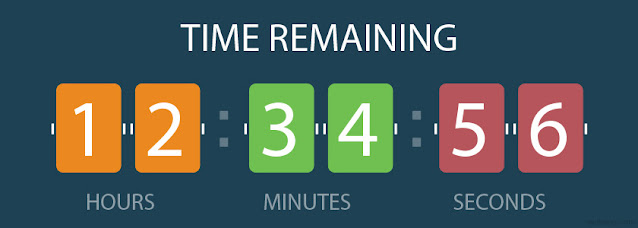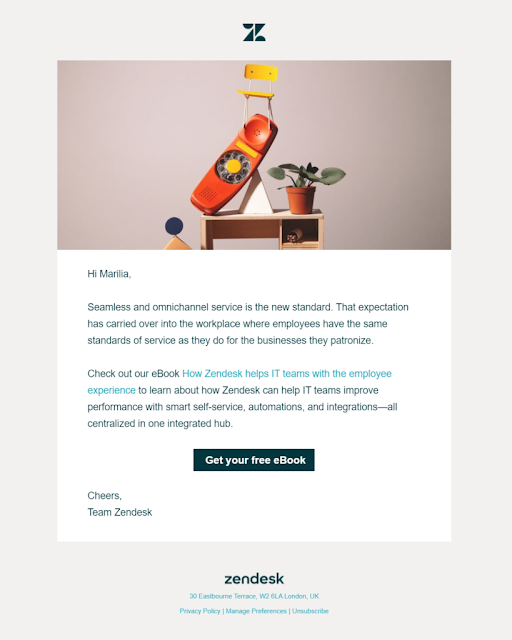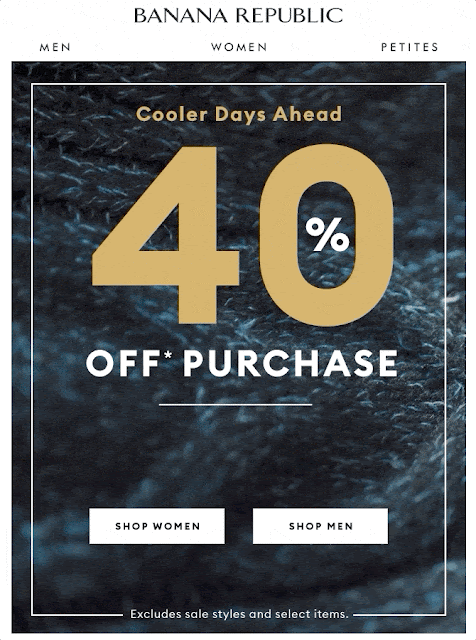 |
| How to create the perfect email for your email marketing campaigns |
Several years of practice and hundreds of waves surfed.
And despite that, to this day I still get a little nervous just before I stand up on the board every time I surf.
Something similar happens with email marketing.
Since specializing in it, I've lost count of the number of emails I've written and sent, both to myself and to clients.
However, before sending each new email I feel a bit nervous, because deep down until I send it, I don't really know if it's going to work.
Like in surfing: until you get on the board, you don't know if that day will be one of rolling or riding one wave after another with the ease of a water tamer.
Email writing isn't an exact science, so you have to experiment a lot until you figure out what works and what doesn't.
Can you imagine having a shortcut?
Well, you are in luck, because that is precisely this article. I am going to share with you my best secrets so that you can write the perfect email for your next campaign from the subject to the final point.
How to create an irresistible subject in email marketing
Writing a good subject line is no easy task, and writing a magnetic one is even more complicated.
However, you cannot afford an issue that goes unnoticed, leaves you indifferent, or does not arouse the necessary curiosity in your customers, because if the issue does not motivate opening, the failure of your campaign is assured.
[Tweet “If the subject does not motivate opening the email, your campaign will be a failure”]
It's like a bodyguard in a nightclub: no matter how good the party is inside if he doesn't let you in, you stay out.
In email marketing, the party is inside the email, so you have to make your reader want to open it and devour the content.
To help you, take note of these 10 tips.
1. Use brackets
When you send a lead magnet, an infographic, announce a new webinar or a new blog post, use the square brackets:
[New Webinar] 5 essential tricks to boost conversions in email marketing
2. Describe the value of the email content
Both to show what they will achieve and what they can avoid, as in this example:
70% of marketers make this mistake when creating content. You are one of them?
3. Use humor, be unique and personal
Don't be afraid to show your personal side from time to time.
What the hell is going on?!
Sharing a more personal tone will surprise your subscribers in a positive way and improve your conversion rate.
What if doing this increases the rate of unsubscriptions?
Well, nothing happens. If those people don't like your style and don't connect with you, they better leave. It's better to have fewer but quality subscribers than a huge list of people who don't convert, don't you think?
4. Personalize emails
It is not necessary to use the name in each email, but in those in which mentioning the name is natural, do not hesitate and include it in the subject of your email.
Pepito, what would you do in my place?
5. Create urgency and scarcity
The feeling of urgency and scarcity arouse very effective emotions in a sales campaign, so if you manage to create a subject line that includes these two ingredients, you can ensure a high opening rate.
 |
| How to create the perfect email for your email marketing campaigns |
Why do they work so well?
Urgency motivates to take action. We tend to procrastinate and leave everything to the last minute, so an injection of urgency moves the reader to seize the opportunity now.
On the other hand, if we add a dose of limited units to that urgency … the effect is multiplied.
[Last Chance] 85% discount ends in 2 hours
6. Use quotes
Quotation marks create the impression that the subject is something someone has said, part of a story, which makes it personal.
We all like stories and no one likes to stop halfway.
Imagine that, in a cooking and recipe context, you receive this subject:
“I don't know how to eat this”
Don't you want to know what the hell happened for someone to say something like that?
7. Be specific
What's in the email? A good strategy for creating a compelling email subject is to be explicit about what they will find when they open it.
7 steps to create your first email marketing campaign
8. Be positive
Subject lines with positive messages work better than those that appeal to negative emotions.
What if you want to generate scarcity and urgency? It can be done by being positive.
The last chance to get [whatever-it-is] is waiting for you
9. Synthesize
How long should an issue be?
The perfect subject should be short. Very short. According to several studies, the ideal length is between 3 and 4 words.
[Tweet “Do you know how many words the perfect email subject is?”]
From there, each new word added will be a percentage less opening. Adding the fifth word is only recommended if it will add something essential to the rest of the subject.
10. Be careful with capital letters
The use of capital letters reduces the percentage of openings of an email, so be careful how you use them in your subjects!
And it's not just that they reduce openings, it's that many emails are sent to the trash can or marked as spam just because of the subject, so special care must be taken.
Do not write the subjects completely in capital letters and use them judiciously: to highlight a specific and strategic word or when it goes between brackets.
How to write the body of the email
 |
| How to create the perfect email for your email marketing campaigns |
If I had to give you one piece of advice, it would be this: don't start the email with a greeting; go straight to the point.
Taking into account that people have little time, better than a "Hello, So-and-so", start with: "I know this sounds crazy, but when I was [and you start telling a story related to your client's problem ]”.
That is, don't waste characters on greetings and try to hook your reader with a story with which they quickly feel identified.
Is this an exact science in all sectors? Not at all.
Not saying hello may not be the best solution for certain types of audiences, but the truth is that most people don't really care about formalities. What they want to know is what you have for them and why you have shown up in their inbox.
But, beyond the start, how do you write the body of an email to be effective?
It depends on the type of mail. I tell you the keys that work best.
welcome email
The moment immediately after a person signs up is the best time to start building a relationship with your new subscriber.
According to a study by Ometria, 74.4% of people expect to receive a welcome email. And according to other research, you can get 4x higher open rates and 5x higher CTR than when sending promotional emails.
Seen what we have seen, it seems logical to include a welcome email in your email marketing strategy, right?
To optimize its effectiveness, thank them for signing up, explain what they can expect from your mailings, and include a call to action (to download a resource, follow you on social media, or even buy something at a special discount).
Confirmation email
The confirmation email is similar to the welcome email. It is an email that you send right after a conversion has occurred; for example, a sale.
What information should you include?:
- A summary of the purchase (the contracted products or services).
- A thank you.
- Information of interest (how will you receive it, when…).
Even if the goal has been achieved, don't be lazy and take care of the style to convey closeness and strengthen the relationship with that person (improve engagement, as they say in the marketer world).
Email “I know what you need now”
Do you know the life cycle of your customers? It is essential to take advantage of this type of email.
The life cycle of a client is made up of the different moments in which a person spends to be able to offer solutions to each of them.
For example, in my case, a client who has just discovered that email marketing exists (and therefore has a novice profile) does not have the same problems as someone who seeks to improve conversion rates or who wants to optimize their sales funnels.
If you are able to detect the phases your customers go through, you can anticipate them and offer them specific solutions for specific problems for a longer time.
Sales email and special offers
 |
| How to create the perfect email for your email marketing campaigns |
How long should a sales email be?
Well, there is no single answer for all cases, because it depends on the complexity of the product or service you want to sell and its price.
Trying to sell something that costs only € 7 is not the same as trying to sell a mentoring service that costs € 5,000.
However, although it depends on the offer itself, the sector, and the audience, I do not recommend turning your email into a little novel. 😀
Long emails tend to get less read than short ones, so the shorter the better.
Remember that to explain your offer in detail and persuade your client you already have a sales page, so we could say that the function of the email is to get them to click and land on the landing page.
So what should a good sales email contain?
The greatest benefits of the product or service you want to sell.
If you're into numbers, according to HubSpot, the perfect sales email is between 50 and 125 words.
Do they seem few to you?
Actually, it is an exercise in synthesis: do not say with 4 words what you can say in 2 and focus on the benefits, the urgency, and a good call to action (we will talk about this later).
[Tweet “What is the perfect length of a sales email?”]
Email on designated dates
If you think of Black Friday, Christmas, or Valentine's Day, what do these dates have in common? That everyone sends emails with offers.
So here the question is: how to stand out from the avalanche of emails that customers will receive?
There is a very effective trick: anticipate and be the first to appear in the inbox.
That is, send the emails of your email marketing campaigns before the special date arrives.
educational email
What is an educational email? An email in which the content helps solve a problem or a need that your potential client has.
In this case, studies, success stories, and explanations on how to solve a problem in an alternative way usually work very well.
Subscriber reactivation email
Are there “sleeping” or “zombie” subscribers on your list who never open your emails?
You need to do something to try and reactivate them and re-engage them.
To do this, nothing better than using one of the basic principles of persuasion: reciprocity.
Reciprocity defends that most people are willing to give something in return if they first receive something that is useful or interesting.
So, first of all, think about what you could offer to this group of subscribers to attract their attention and awaken in them the feeling of reciprocity. How about a new free ebook, for example? Or a discount?
No matter what. The important thing is that it is a valuable gift for them.
The next step is to ask them for a small favor in return: to answer 2 or 3 questions (no more!) to try to find out why they are inactive.
When you try this strategy in your email marketing, you will see that many of them will be reactivated simply by answering these questions. Others will respond, even if they do not reactivate (but you will have obtained valuable information) and others will unsubscribe (to keep them asleep, it is better if they leave).
You can start this email with "Hey, I've noticed something isn't quite right" or "Can I ask you for a little favor?"
Present your gift and add the call to action quickly so your questions are answered right away.
Purchase abandonment email
We could write a thesis about cart abandonment, but we are going to summarize it in some specific examples so that your cart recovery emails are effective.
The objective of this type of email is to remind your customer that they have something pending in the cart. Something that is YOURS.
Of course, he has to pay for it first, but by focusing on what he's already done (the steps to near checkout) you activate a sense of ownership in his unconscious mind.
For example:
Pepito, have you forgotten about your [product/service]?
Your [product/service] is waiting for you.
And add a pinch of scarcity and urgency; tell him he still has a chance to get it, but for a limited time:
Your [product/service] is waiting for you.
You can get it only for X days.
Turn the offer into something exclusive:
[product/service] is still available only for you.
Buy [product/service] now and get an X% discount.
Also, try to appeal to emotions to make your offer even more irresistible.
Feedback request email
Knowing first-hand the opinion of your clients is a treasure.
However, it is very common not to know how to collect this information. In part, we are embarrassed to ask and in part, it scares us in case they are not satisfied.
Well, I will tell you that an email marketing campaign without a request for feedback is like a garden without flowers.
I recommend asking for feedback from both buyers and non-buyers.
From the buyers, you will know what level of satisfaction they have achieved, and what you can improve and you will be able to have customer testimonials (social proof has a great weight in internet purchases).
Of the latter, you will know what are the biggest objections that your potential clients find and anticipate them in your next campaign.
To get feedback in this email, apply the law of reciprocity and make it clear what you want them to do next. That is, ask clearly through a call to concrete action.
I think the time has come to stop and talk in detail about CTAs.
How to close the email: CTA
If you look, regardless of the type of email you send, practically all of us have talked about the call to action.
It is just as important to write an eye-catching subject to encourage the opening of the email as it is to finish it with a good CTA that invites you to click.
But what is a call to action or CTA?
Neither more nor less than the next step you want the reader to take.
- In a sales email, the CTA will be a link to the sales page.
- In a newsletter announcing your new post, the CTA will be the link to the post.
- In a survey email, the CTA can be a simple question or a link to a form.
As you may be imagining, an effective call to action is one that achieves a high conversion rate.
How to build a perfect CTA?
First of all, you need to think about the purpose of the email.
Why are you sending that email? The response will tell you what action you want your subscriber to take when they finish reading and will give you clues on how to approach the call to action.
I leave you the most important keys that you must take into account when creating a CTA:
- One email, one CTA: make sure there is only one destination in an email. If you overwhelm your reader with multiple options, they may not click anywhere.
- Highlight a benefit: Instead of “click here” or “Buy service X here,” turn the CTA into a benefit. For example, "I want to improve the conversions of my email marketing campaigns."
- Use an action verb: Start your CTA with an action verb rather than a noun or adjective.
- Speak in the first person: Write the verb from your client's point of view. For example, "Tell me how to improve my Instagram profile" vs. "Improve your Instagram profile."
- Include words that invite action: “now”, “today”, and “already”.
- Make sure the CTA stands out from the rest of the text at a glance.
- If you include a button, use orange.
- Check that the link works: if the call to action is a link, please, before sending your email, make sure that it works and leads to the correct destination!


Comments
Post a Comment